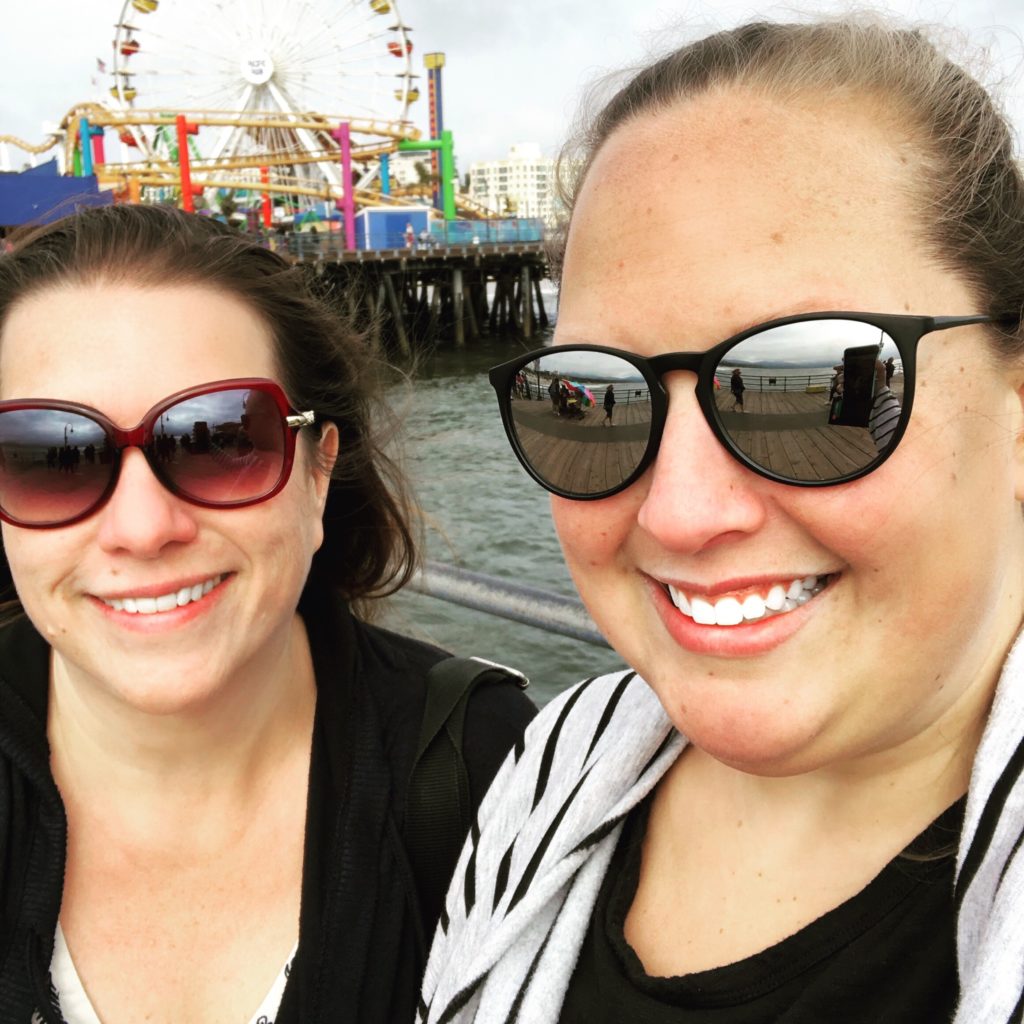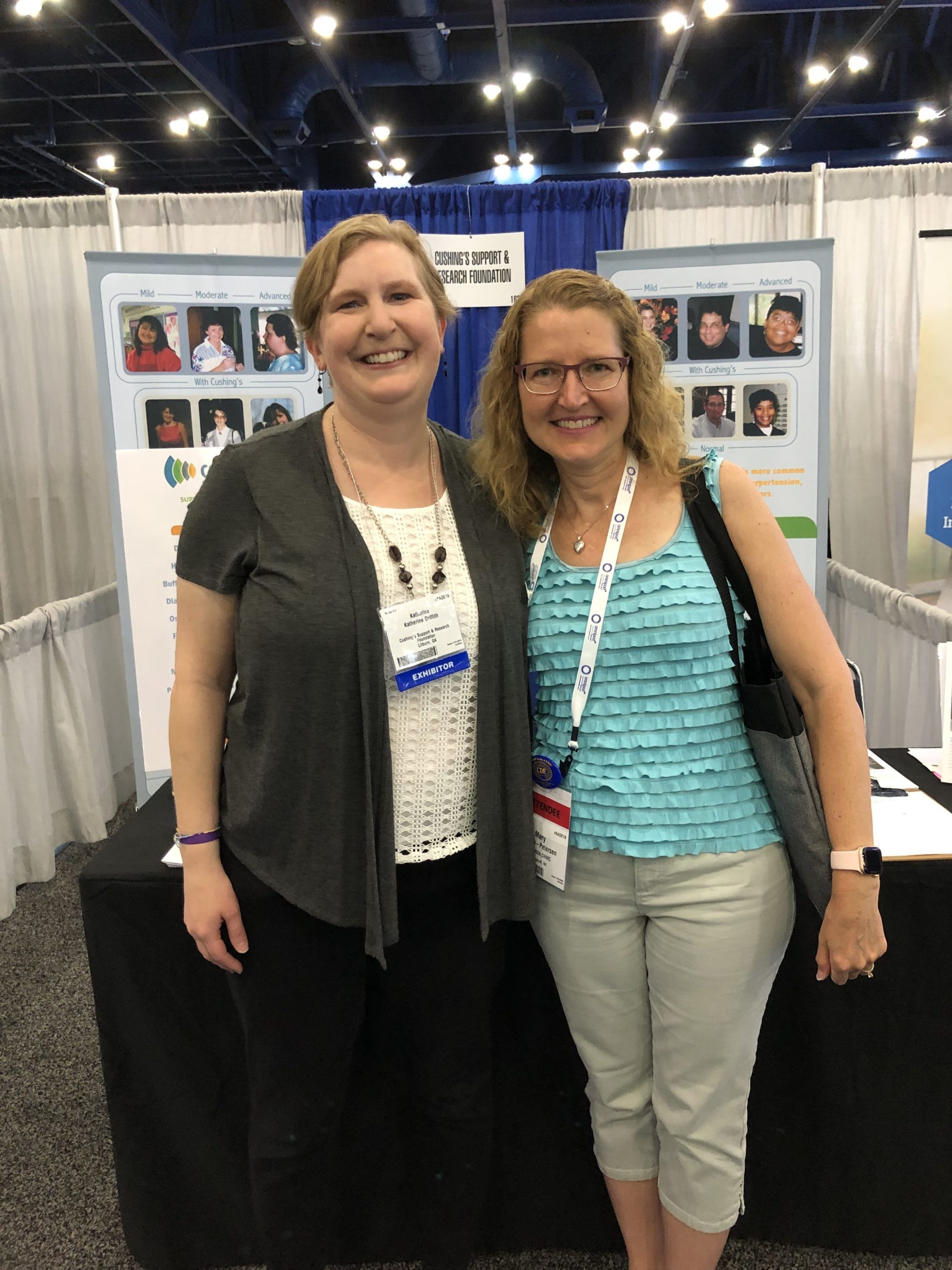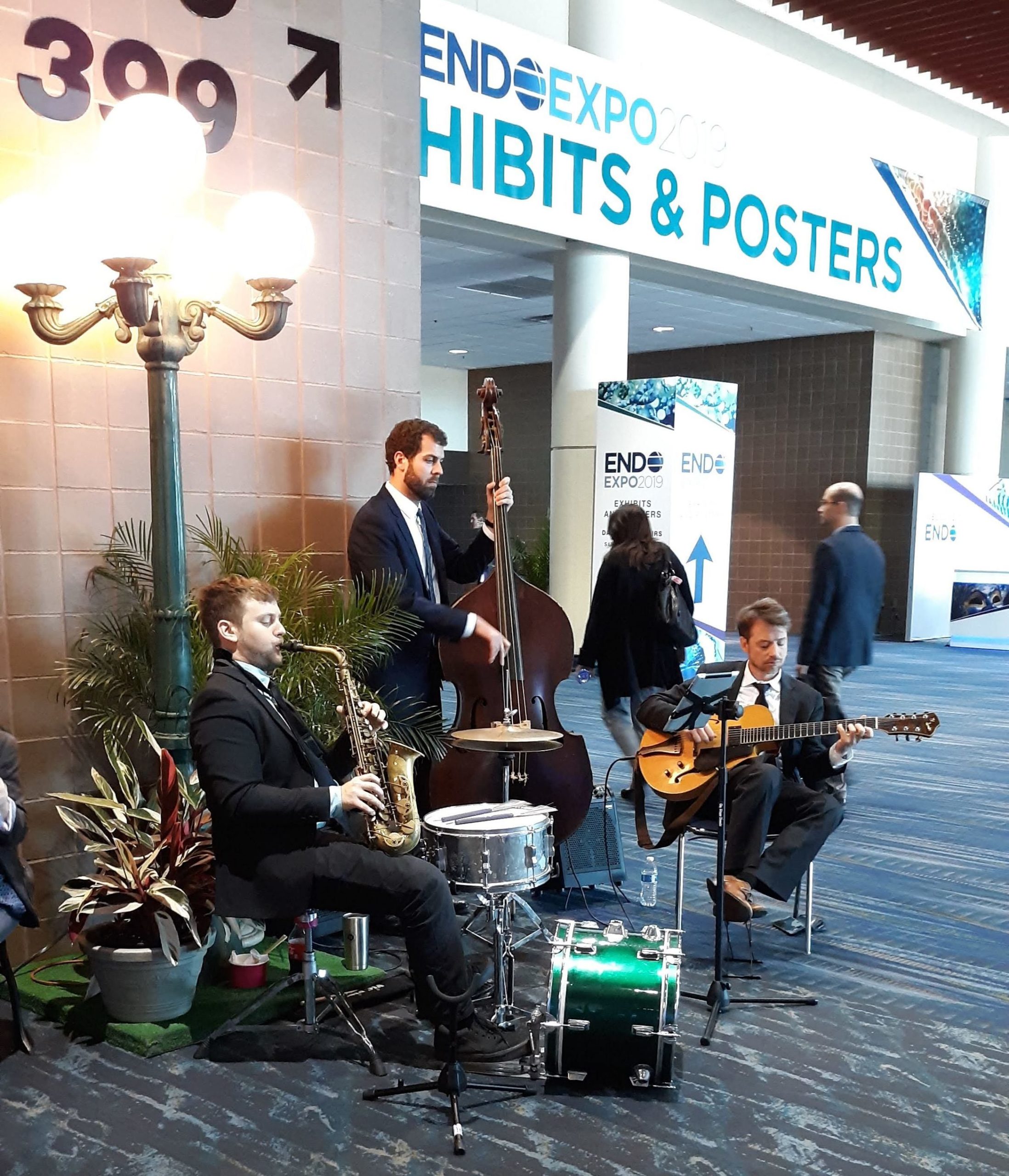Spring brings pollen, baby birds, short sleeve shirts…and endocrine conferences! We look forward to this time of year because it’s a chance to hear about new science and technology that have become available. We share our resources and make new connections with doctors, nurses, researchers, and other stakeholders. We then translate some of the most relevant discoveries into educational materials and articles in the newsletter and on the website.
In 2019 we attended and/or exhibited at nine conferences and held one of our own:
- Pituitary Society International Pituitary Congress, March 20-22, New Orleans, LA
- Endocrine Society Annual Meeting and Expo (ENDO), March 23-26, New Orleans, LA
- World Orphan Drug Congress – USA, April 10-12, Oxon Hills, MD
- Memorial Sloan Kettering Update on the Treatment of Pituitary Diseases Symposium (MSK), April 12, NYC
- American Association of Clinical Endocrinologists Annual Scientific and Clinical Congress (AACE), April 24-28, Los Angeles, CA
- World Association of Pituitary Organizations Summit, May 17-19, Lyon, France
- European Society of Endocrinology European Congress of Endocrinology (ECE), May 18-21, Lyon, France
- American Association of Diabetes Educators Annual Conference (AADE), August 14-17, Houston, TX
- CSRF Patient Journey Summit: Defining the “New Normal”, October 4-6, Atlanta, GA
- National Organization for Rare Disorders Rare Disease Summit, October 20-22, Washington DC
What follows is a summary of highlights from these conferences. Amy Dahm, Patient Advisory Committee member, wrote an article about her experience at the World Orphan Drug Congress and WAPO – you can find that following this article. The CSRF conference also has its own write-up in this issue.
Perioperative Management of Patients with Cushing’s Syndrome (Pituitary Society)
Dr. Fleseriu and Dr. Elena Varlamov, both from the Oregon Health and Science University in Portland, discussed concerns of both patients and their medical teams at the time of surgery. Most of us who have had to spend five or more days in the hospital have probably asked every person coming in the room – “when can I go home?” It’s worse when we get different answers from different visitors, but when it comes down to it, our endocrinologists are the ones to make that determination. They are the ones who have been tracking our cortisol, and they will be the ones we need to monitor us closely after surgery. When we have educated and experienced doctors, they are familiar with the “predictive value” of our blood numbers immediately following surgery and will be able to answer some of our more difficult questions regarding what we can expect of our health based on how the surgery went.
There are three areas of particular interest going into surgery:
- anticoagulation
- pre-operative management of hypercortisolism
- assessing remission post-operatively
Anticoagulation can be defined as treatment to prevent blood clots. More information is becoming available as time passes that there is a strong connection between hypercortisolism and hypercoagulability, and the highest risk comes at surgery. There doesn’t seem to be a greater or lesser risk based on the source of Cushing’s; we face an almost 18x greater chance of clotting than the general population.
There are known culprits for increased risk of blood clots – obesity, smoking, immobilization, and some drugs like estrogen and progesterone, for example. There is conflicting data coming out that seems to point to high urinary free cortisol tests (UFCs), abrupt drops in cortisol after surgery, and treating Cushing’s with medication at the time of surgery may also increase the odds. These findings have doctors’ attention – should everyone be treated with anticoagulants at surgery? For how long? Who are the best candidates? What about for IPSS (inferior petrosal sinus sampling)? The answer, for now, is that they are working on it. Dr. Fleseriu and her team published an article that goes into much better detail titled Hypercoagulability and Risk of Venous Thromboembolic Events in Endogenous Cushing’s Syndrome: A Systematic Meta-Analysis which you can find at https://www.ncbi.nlm.nih.gov/pmc/articles/PMC6360168/ or by scanning the QR code.
Pre-operative management of hypercortisolism’s goal is to “stabilize” severe Cushing’s and optimize dangerous co-morbidities like diabetes, hypertension, and low potassium. Research shows that adequate pre-treatment has been associated with a higher rate of long-term remission, and it may also reduce the occurrence of adrenal insufficiency (AI) in the immediate post-op periods. The downside is that it can also cause inaccurate early post-op numbers.
Data in the European Union-funded European Register on Cushing’s Syndrome (ERCUSYN) shows that patients in Europe who received medical therapy for hypercortisolism prior to surgery were sicker overall at the beginning of therapy with higher blood pressure, more muscle weakness, and more skin changes than the “average”. Unfortunately, there isn’t any UFC data attached to that information to help evaluate. These patients more frequently reported having cortisol levels within the normal range immediately after surgery. However, patients in the registry who did not have pre-surgical medical therapy, most likely because their symptoms were not alarmingly severe, were more frequently reported to have low or undetectable cortisol levels immediately after surgery, cure and remission, and more robust clinical improvement of symptoms over the group that needed the medical therapy. Upon evaluation six months after surgery, there was no difference in remission rates or prevalence of post-surgical problems (like blood clots) between the two groups. The doctors agreed that it is reasonable to consider pre-treatment on an individual basis, but the data does not support an across-the-board recommendation for everyone to have it at this time.
Assessing remission post-operatively gets tricky. The doctors pleaded with their colleagues to stop using the word “cure”. Recurrence rates are so high, this word could carry a huge psychological burden for patients who are called cured and then go on to experience recurrence. They recommend the word “remission” once biochemical numbers are stabilized and patient-reported data supports it.
Blood cortisol ranges immediately after surgery:
- if less than 2, there is a higher chance of long-term remission
- values between 2-5, which is most patients, will mostly also be in remission
- values greater than 5 usually indicate unsuccessful surgery but some will have a delayed remission
- looking at cortisol and ACTH together, if cortisol is less than 2 and ACTH is less than 5 after surgery, there is an almost 100% chance that the patient will achieve remission, but an ACTH higher than 15 is an 87.5% chance for persistent disease
ALL PATIENTS NEED LONG-TERM CLINICAL FOLLOW-UP! There is NO post-op number that will clear a patient from recurrence. This is a lifelong disease. Our input is needed constantly because problems don’t fully go away. This cannot be emphasized enough.
The Challenge of “Pseudo-Cushing’s” (Pituitary Society)
Dr. John Newell-Price, University of Sheffield, UK, discussed investigation of Cushing’s syndrome at the mild end of the spectrum. “Pseudo-Cushing’s” can be defined as some of the clinical features that resemble true Cushing’s combined with some evidence of hypercortisolism, but he was quick to point out that the term pseudo-Cushing’s is misleading. If a patient presents with persistent hypercortisolism that is not caused by a tumor, it is important to determine the cause and correct or treat it, if possible. Some conditions that cause high cortisol include pregnancy, chronic alcohol dependence, severe obesity, metabolic syndrome, poorly-controlled diabetes, major depression, anorexia, severe physical illness or stress, malnutrition, and chronic excess exercise.
Testing can be a challenge because some results will indicate the presence of hypercortisolism, but it is not from an autonomous source (tumor), so the question becomes how to address it with the patient. Questions remain about the best management practice for patients with non-Cushing’s hypercortisolism. There are current trials for some drugs that could hold answers to some of these questions.
ENDO
The posters at ENDO are fascinating every year. While a poster is not a published, peer-reviewed, controlled piece of research, it is an eye-catching way to present work being done and provide opportunities to discuss the details in person with conference attendees. If you would like to see one of the posters mentioned, please e-mail Leslie at [email protected]. Some highlights and brief summaries, including title and institution:
Cushing’s disease in men: a 20-year single center experience, Emory University School of Medicine, Atlanta, GA: The authors looked at records from 108 transsphenoidal surgeries done by one surgeon in one location between 1994-2014. They were specifically looking for gender differences in presentations and outcomes, because there’s very little research in this area, and what does exist can be conflicting. The authors concluded that more work needs to be done to look at differences, but their study noted a few differences like hypopituitarism and hypertension affected men more than women, and men tended to be older at surgery.
Safety and Efficacy of Early Postoperative Acetylsalicylic Acid for the Prevention of Thromboembolism After Transsphenoidal Surgery for Cushing Disease, Brigham and Women’s Hospital, Boston, MA: This study looked at starting acetylsalicyclic acid (the compound in aspirin) within 48 hours of transsphenoidal surgery to prevent blood clots. As mentioned previously in this article, doctors are starting to address this serious post-operative risk. The conclusion here was that using this drug was well-tolerated and clotting was rare despite all the risk factors.
Racial distribution, presentation, and outcome in acromegaly and Cushing’s disease: A tertiary referral center study in 220 patients, Georgia Tech College of Sciences and Emory University School of Medicine, Atlanta, GA: The US Central Brain Tumor Registry reports that African-American patients have a higher incidence of pituitary adenomas than non-Hispanic white patients, but some studies show that African-Americans are less likely to have surgery at high-volume centers. The authors of this study believe it is the first of its kind to look at race-specific patient characteristics in these two pituitary disorders. While African-American patients overall had more macroadenomas than non-Hispanic white patients, there were no real differences in long-term outcomes.
Peripheral Clock System Circadian Imbalance in Cushing’s Disease, Ribeirao Preto Medical School, Brazil: The authors here identified that healthy cortisol circulation is the main driver of “circadian rhythm, controlled by the clock genes system.” Because of that, Cushing’s Disease may be associated with disruption of this system. Participants collected a salivary cortisol test at 9am and 11pm, then blood samples were taken four times throughout the day to assess seven “clock genes”. In patients with Cushing’s, the normal circadian rhythm was absent in six of the seven; in the final gene, variations were shown. The authors share that this is the first study looking at the circadian rhythm of clock genes and how they are ruined in hypercortisolism. This may contribute to the features of Cushing’s. (Editor’s Note: I didn’t know what clock genes were before I saw this poster. If you’re interested in circadian rhythm, I’d encourage you to read more on the subject! This publication does a great job of explaining it, or scan the QR code: https://www.unifr.ch/biochem/assets/files/albrecht/publications/AlbrechtRipperger.pdf
Zebrafish to Humans: Translating Discoveries for Treatment of Cushing’s Disease (AACE)
Dr. Shlomo Melmed, Cedars-Sinai Medical Center, Los Angeles, CA, opened this hugely popular session by addressing some of the most dangerous symptoms of Cushing’s – depression, stroke, hypertension, infection, metabolic syndrome, thrombosis – and asking if we can “slow, stop, or reverse the inexorable decline by impeding cortisol production and action.” If inadequately controlled, Cushing’s Disease has a median survival rate of 4.6 years. That life expectancy is the same as it was in 1930.
There are challenges to the drive to understand how pituitary tumors come to exist: control tissue from healthy subjects is unavailable, the tissue removed during surgery is extremely small, it’s difficult to do a biopsy, and there’s just a very low prevalence of tissue available in general. In 2011, Dr. Melmed and his team published research about their transgenic creation of a zebrafish model that would rapidly develop pituitary tumors and serve as a model that could be used in place of readily available pituitary tissue. They experimented and discovered that a drug called roscovitine inhibits tumor growth and also suppresses ACTH production, which could mean it performs other functions that have not yet been determined. The end goal is to identify specific tumor drivers and personalize precision treatment. Roscovitine is currently considered an experimental drug candidate and even has a new name – Seliciclib. In December of 2018 Dr. Melmed became the Principal Investigator on a Phase 2 clinical trial out of Cedars-Sinai Medical Center in Los Angeles, CA looking at its use to treat Cushing’s Disease – ClinicalTrials.gov Identifier: NCT03774446.
Mild Cushing’s Syndrome (CS) – Does it Matter? (AACE)
Dr. Maria Fleseriu, OHSU, discussed how and why to diagnose mild Cushing’s syndrome. She began by rejecting the term “subclinical Cushing’s syndrome” in favor of “mild autonomous hypercortisolism”. She then defined this as a condition of hypercortisolism in the absence of specific signs of cortisol excess such as striae, moon face, buffalo hump, muscle weakness, skin atrophy, and plethora. Criteria to diagnose mild hypercortisolism is currently 1)the presence of an adrenal incidentaloma and 2)a low-dose dexamethasone suppression test where:
- hypercortisolism is confirmed if result is 5 or above
- hypercortisolism is a possible diagnosis if result is between 1.8 and 4.9
- hypercortisolism is ruled out if the result is less than 1.8
There are caveats to this testing as well – if the patient takes oral contraceptives, is sick, has liver problems, takes antiseizure medications, or consumes alcohol, for example, the test results can be skewed. There are other tests to help with diagnosis – DHEA-S (dehydroepiandrosterone sulphate – suppressed in mild hypercortisolism), late night salivary cortisol, and adrenal scintigraphy (helps determine exactly what kind of mass is on the adrenal). The bottom line is that you need at least two positive tests of different methods to make a diagnosis. For incidentalomas, the low-dose dexamethasone suppression test is the best, followed by late night salivary, followed by UFC. The other tests can serve as “back ups”.
Mild hypercortisolism, over time, can negatively impact a patient’s metabolism, cardiovascular system, bones, and blood, so it needs to be addressed early for best long-term outcomes. Depending on the severity of the hypercortisolism, the patient has a number of options similar to those of a patient with a hormone-secreting adenoma.
Hypopituitarism and Pregnancy (AACE)
Dr. John Carmichael from the Keck School of Medicine at USC presented on the topic of fertility and hypopituitarism. It was such a great session, we had to do a break-out article with him! See the Doctor’s Articles section for that.
Quality of Life Research – Dr. Susan Webb Award Lecture (ECE)
Dr. Susan Webb, Sant Pau Hospital in Barcelona, was awarded the 2019 Clinical Endocrinology Trust Award for her research on pituitary diseases – specifically on the persistent morbidity of supposedly “cured” endocrine patients, and on the patient perception of their own disease. Patients are very lucky to have Dr. Webb on their side because she has been instrumental in championing the patient voice and non-clinical variables as important to optimal outcomes.
She started by saying that the word “cured” does not always mean the same thing to the doctor and patient – for the endocrinologist, it means that hormones are normal and the tumor is stabilized, but for the patient it also means the ability to continue performing regular daily life tasks without pain or other limitations. Over the last two decades data has shown that despite “cure”, Cushing’s patients have more cardiovascular, skeletal, and neuropsychological problems than the general population.
In the brain alone, there are four types of abnormalities and neuropsychiatric disorders in Cushing’s syndrome:
- STRUCTURAL ABNORMALITIES – brain atrophy, decreased cortical thickness, reduced grey matter volumes of cerebellum and anterior cingulate cortex,widespread reduction of white matter integrity
- FUNCTIONAL AND BIOCHEMICAL ABNORMALITIES – reduced functional response during memory testing and emotional processing, altered connectivity between prefrontal cortex and posterior cingulated cortex, alteration of the cholinergic system, low levels of neuron integrity markers, high levels of glutamate (causes cell damage) in the hippocampus, and widespread reduction of white matter integrity
- DEFICITS IN COGNITIVE FUNCTION – memory, verbal learning, language, spatial information, and working memory
- PSYCHOPATHOLOGY – depression, anxiety, mania, maladaptive personality, and panic
Dr. Webb has at least 150 articles listed on PubMed – we encourage you to scan through and read some to get a better feel for the expanse of knowledge this doctor has put into our community. https://www.ncbi.nlm.nih.gov/pubmed/?term=susan+webb or scan the QR code.
National Organization of Rare Disorders (NORD)
NORD holds an annual Rare Summit every October in Washington DC, and due to a scholarship program for member organizations, we have been able to attend many years in a row. The definition of a rare disease in the United States is one that affects less than 200,000 Americans. The FDA and other key policy-makers are extremely focused on advocacy and the patient voice right now – it is a good time to be a patient advocacy organization, because they seem to be listening more than ever. As you can read in Amy’s article in this issue, the FDA has set up avenues to engage with patients to improve their drug development processes. It’s such a simple and smart thing to bring patient experts in on all levels of decision-making because that’s exactly what we are. We know parts of this disease that you can’t learn anywhere else.
Attending the NORD Summit puts hundreds of patient advocates, many suffering from the diseases they represent, in the same room with teams of people from the FDA, CEOs, researchers, technology innovators, and others whose sole job it is to run the rare disease drug and access machine. On some scales, an organization like ours would get lost in the crowd, but at the NORD Summit we are amongst peers. NORD does an amazing job of supporting their member organizations with board management resources, access to scholarships for rare-related meetings, and general support. Just like with Cushing’s, it feels great to get a chance to be around people who are in a rare position like you and understand what it’s like to devote all your time to a cause you care fiercely about.
The theme for 2019 was “The Time is Now.” In keeping with the theme of collaboration, there were many sessions that talked about bringing patients to the table at all points of drug development. Patient organizations in attendance were encouraged to set up patient registries; NORD and several companies in attendance have platforms for groups like ours to build registries. We’re not quite at that point yet but it’s good to start talking about it. If you’re curious to learn more now, visit https://www.ncbi.nlm.nih.gov/books/NBK208643/ or scan the QR code.















Sorry, comments are closed for this post.